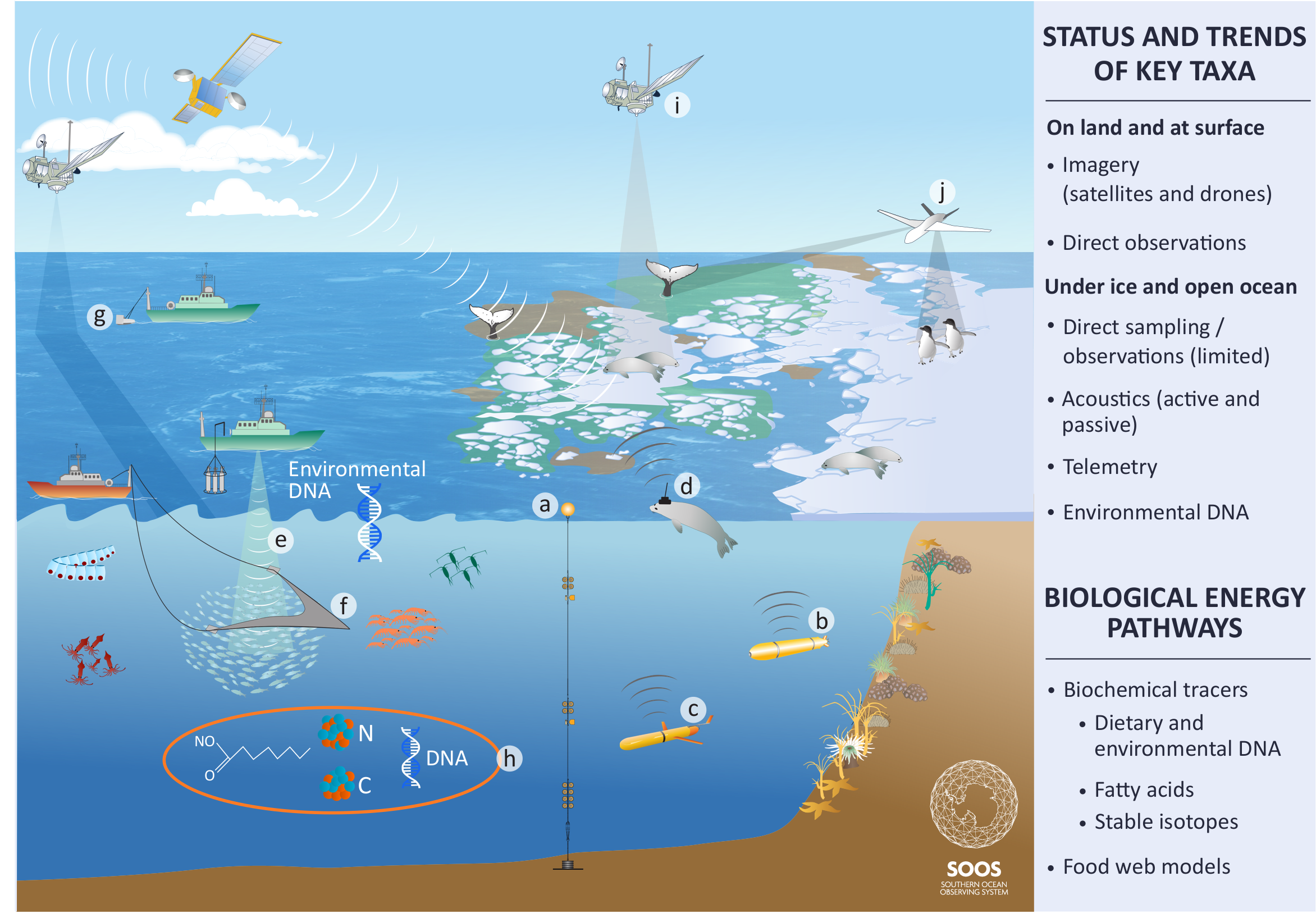
Science Theme 4: Ecosystem & Biodiversity

Understanding and quantifying the state and variability of the Southern Ocean ecosystems and biodiversity
The circumpolar Southern Ocean is strongly affected by the seasonal advance and retreat of sea ice, which in turn contributes to the regional heterogeneity of Southern Ocean food webs. During the past few decades, the oceanic and cryospheric characteristics of the Southern Ocean have changed with consequences for ecosystems and biogeochemical linkages (e.g., see Theme 3). Accurate estimates of biomass in all trophic levels are essential to assess the impacts of climate change.
The challenges posed under this Theme focus on understanding responses of Southern Ocean ecosystems to climate change and human activities. Addressing these challenges requires sustained observations that capture population changes of key species, main components of food webs, their spatio-temporal changes and/or the overall structure and function of food webs. Increased observing efforts of mid-trophic level groups, for which major data gaps persist, will require better standardisation of net sampling, as well as improved models to convert acoustic backscatter data into biomass. Key gaps to be addressed in biological observations also include production in the habitats beneath and within sea ice, temporal expansion of observations (year-round and winter series), co-located and coincident sampling, and measures of diversity and relative biomass of key taxa, links and flux rates. Monitoring of biodiversity in areas subjected to high variations in both terrestrial and marine environmental conditions is crucial for understanding the impact of rapidly progressing changes. Observation systems must work towards being integrated end-to-end, from virus, bacteria, archaea and primary producers to top predators, aiming to provide a quantitative understanding of the impacts of change on Southern Ocean ecosystems. Such observation systems are integral for developing and constraining models for Southern Ocean ecosystems.
Key Science Challenges
4.1: Assess the key drivers of change and their impacts on Southern Ocean ecosystems (food webs and biogeochemical cycling) at circumpolar and regional scales, with emphasis on the effects of changing sea ice conditions on key species that are central to Southern Ocean food webs (e.g., Antarctic krill, upper trophic level species)
4.2: Understand biodiversity of Southern Ocean benthic and pelagic ecosystems at regional and circumpolar by investigating the potential changes accruing from influences of climate change and human activities
4.3: Evaluate the distribution of species in relation to Commission for the Conservation of Antarctic Marine Living Resources (CCAMLR), Marine Protected Area (MPAs) and climate change, considering historical changes and future projections
4.4: Assess the extent to which the “greening” of the Southern Ocean is changing phytoplankton biodiversity, distribution and abundance, investigating the impact of these changes on CO2 uptake, and zooplankton grazers
Addressing Challenges

Delivery of the knowledge and scientific outputs that will address these challenges is carried out by SOOS alone, but by many community efforts, including the programs and projects of SCAR and SCOR, among others. SOOS will not duplicate the efforts of these programs, but will support them where appropriate, to enhance the collection and delivery of the required data. Click below for a list of key community efforts to address these challenges:







